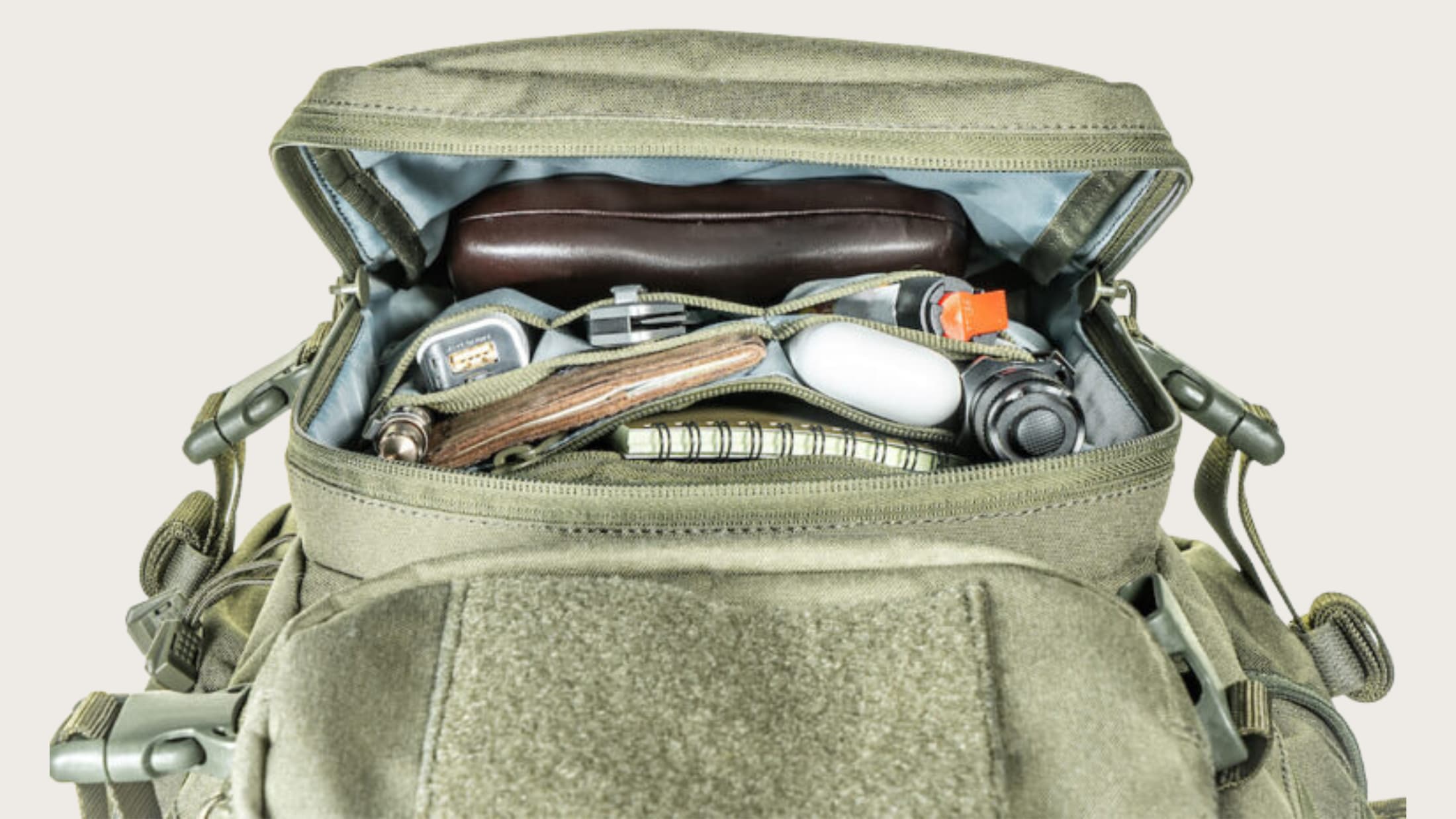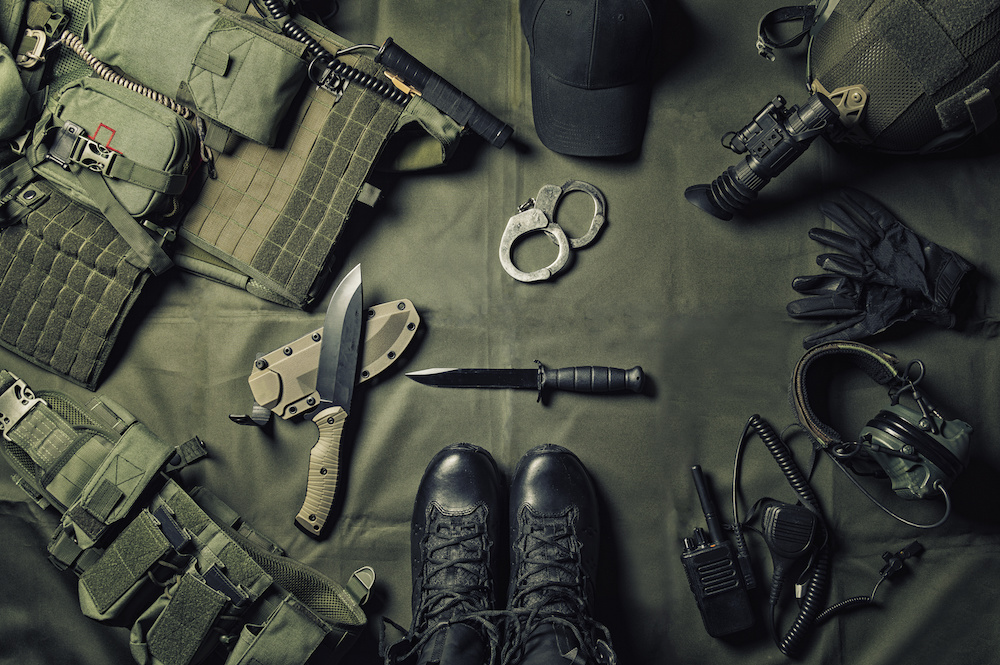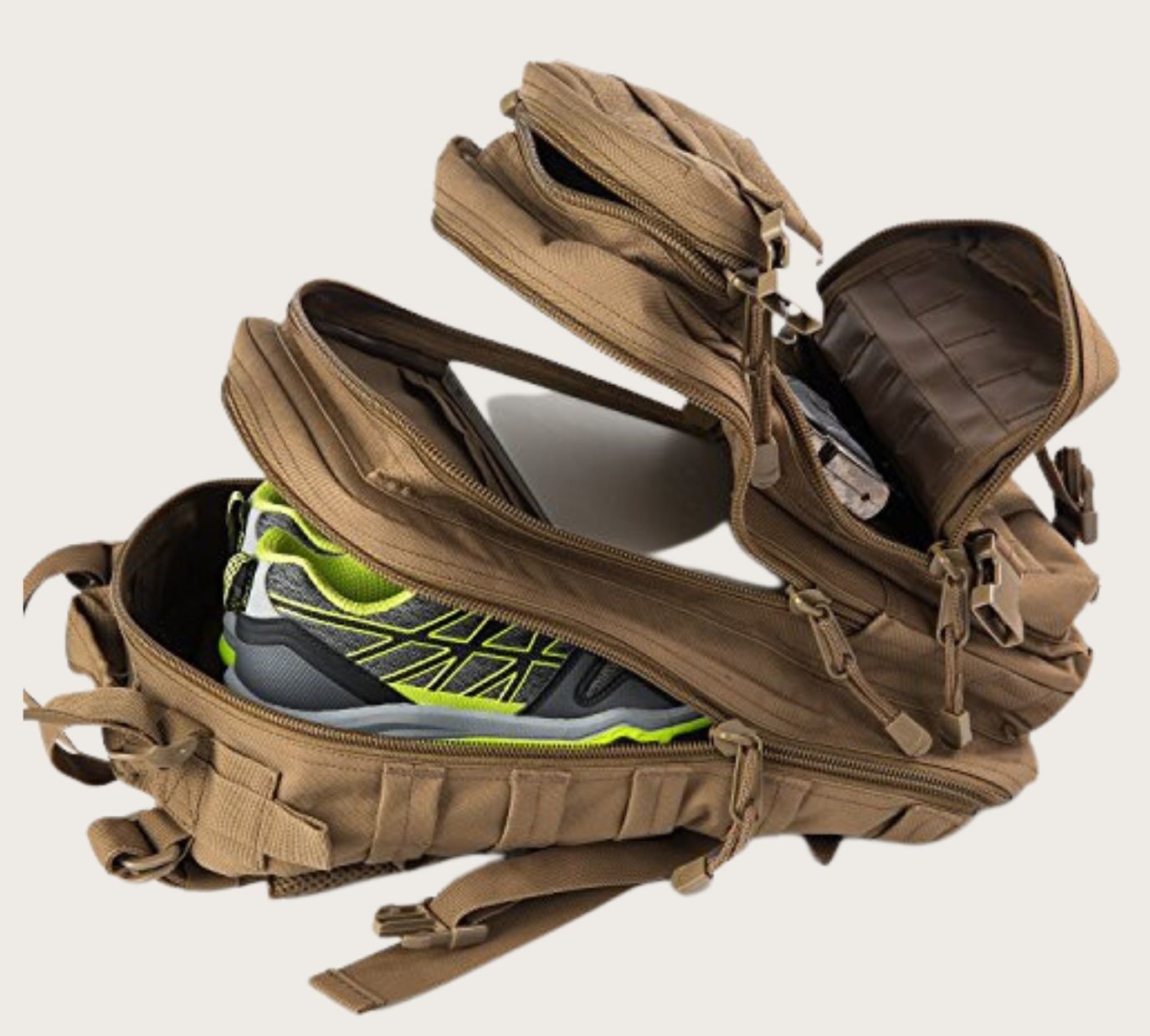Signup for our monthly newsletter and get your FREE "Tactical Gear" Guide
How To Store Tactical Gear: Expert Tips and Tricks
- Home
- Tactical Backpacks Advice
- How To Store Tactical Gear

This site contains affiliate links to products. We may receive a commission for purchases made through these links.
Knowing how to store tactical gear is the best way to protect the hefty investments you’ve made into survival essentials.
There are many unique ways you can keep your items organized at home and on your person.
Whether you’re a law enforcement officer, survivalist, military personnel, or adventurer, we highly recommend these tips.
Table of Contents
- Step 1: Consider Workflow
- Step 2: Determine How Much Storage You Have and Need
- Step 3: Don’t Forget About the Future
- Step 4: Optimize the Space
- Step 5: Remember Maintenance
Planning Your Storage
Before you begin putting your gear away, it’s essential to consider the planning process first.
With planning, you can guarantee if you have more than enough space for your fundamentals, either at home or in your backpack.
It can also give you valuable information for expanding your collection of tools and gear in the future.
Step 1: Consider Workflow
The first thing you’re going to want to consider is your workflow or how easily accessible your gear is.
If you have specific items you’d only need in a very rare emergency, they shouldn’t be at the forefront of your storage.
Alternatively, items you’re likely to use all the time should always be easily reachable.
This theory also applies to packing a tactical backpack, as your least-needed items must always be at the bottom.
You’ll want to make sure you can grab essential gear in a matter of seconds rather than rifling through your goods.
It’s also important to ensure everything is visible and in a location you’re most likely to remember.
Step 2: Determine How Much Storage You Have and Need
The next step is to take an inventory of the items you intend to keep in your storage system.
Are you packing for yourself, or are there several people that will need access to storage?
If you have multiple people in your party, each individual must have their storage solution.
In doing this, you can ensure everyone can effortlessly organize their gear based on personal specifications.
If it’s just you, you’ll need to consider how much storage is required for each item.
During this step, you should consider measuring your gear, as this can let you know whether things will fit in certain areas.
For example, if you have two tactical backpacks, you will need to make sure there is enough room for both to be readily accessed.
Step 3: Don’t Forget About the Future
You likely have a substantial amount of items as it is, but do you have any intention of expanding your collection in the future?
If so, you should always plan for your future needs, even if it means you’ll have more storage than you need now.
After all, you never know if you’ll be adding another person to your party or if you’ll invest in a few more essentials.
Having more storage is far better than having too little, especially when it comes to tactical gear.
Step 4: Optimize the Space
It’s easy to fall into the rabbit hole of building an excessive amount of storage with limited walking space.
Even though you’ll have dozens of shelves, cubbies, and racks to use, you need to be able to access everything quickly.
During the measuring process, make sure you consider walking space, especially with bulkier items.
Consider mixing floor storage with wall storage, as it can expand your options without consuming precious square footage.
Step 5: Remember Maintenance
One of the essential steps to keeping your tactical gear safe is to ensure it’s maintained throughout the year.
For example, ballistic vests will need to be air-dried between uses to maintain the material’s integrity.
All of your tactical gear should have the perfect storage solution for its maintenance requirements.
Ensuring there’s dedicated storage for your gear is also a great way to establish healthier practices.
As a result, you’ll quickly train yourself to take better care of your more expensive items so that they’re always ready to use.

How to Store Tactical Gear at Home
You can now move on to the many options available for tactical gear storage once you’ve finished planning.
First-time tac gear owners are often impressed by the number of well-rounded storage solutions for safety and efficiency.
1. Tactical Lockers
Lockers are likely the most popular option for homes and professional offices, such as law enforcement departments.
For individual owners, you’ll have plenty of built-in organization, including shelves, hangers, and specialty hooks.
You’ll be able to keep extra food rations, spare clothing, tactical vests, hoses, backpacks, and more in a locker.
These storage solutions are particularly beneficial when there’s more than one person who needs them.
Each individual has their locker, which allows them to organize their gear to their specifications.
Alternatively, you can opt for open lockers, which are similar to built-in closet organizers.
With these, you’ll be able to allocate specific shelves, hangers, hooks, and drawers for all your gear.
2. Custom High-Density Storage
This storage option is similar to lockers because there are multiple areas to keep gear in one unit.
In comparison, they are often much larger than lockers and allow for further customization.
Custom high-density storage will allow you to adjust the shelves’ height, the drawers’ placement, and more.
If you have several different tactical gear types, these can often be preferred due to how easy they are to tailor.
You’ll also be able to store an abundance of items, such as parachutes, survival kits, and food rations.
On average, you can hold up to three times more gear with custom high-density tactical gear storage.
3. Weapon Racks and Safes
Before you design storage for your weapons, it’s essential to consider your local laws.
If you live in a state that requires specific storage types, you might not have much of an option.
Weapon racks and safes are two of the most popular options for easy access and safe storage.
The most important aspect of weapons storage is to ensure you’re the only one with access to them.
You’ll also need to ensure every piece is protected from the elements so that they’re always ready to fire.
Note that weapon storage can take up a substantial amount of space in your room, so you’d want to plan accordingly.
4. Open-Shelf Storage
The most basic solution for storing tactical gear at home is to opt for open-shelf storage.
These units are designed with several open cubbies that allow you to quickly grab essentials without a code or lock.
You’ll also find they don’t have any doors, making all of your gear easy to see and catalog.
Open-shelf storage can be extremely beneficial for MREs, survival gear, first-aid kits, and shelter essentials.
The cubbies are often decently sized so that you can hold plenty of items per compartment.
Also, they are available from most big-box retailers at an affordable price.
The most significant disadvantage of open-shelf storage is that your gear isn’t protected from the elements.
Unless you have a temperature-controlled room, your gear is likely to wear down faster.
Basically, while it’s a less expensive storage solution, it could be damaging to your expensive gear.
How to Store Gear in a Tactical Backpack
Storing your gear in a tactical backpack could be more important than keeping it at home.
Not only will you need to protect everything from unforeseen circumstances, but it must also be instantly accessible.
Use these tips to boost your packing efficiency when dealing with your tactical bag.
Tip 1: Label Everything
Even though it’s time-consuming, labeling all of your gear is the best way to keep each one organized.
You’ll also find that it will make it much easier to find the items you need in less time.
Instead of memorizing what your first-aid kit looks like compared to your Dopp kit, for example, you’ll have easy-to-read labels instead.
Tip 2: Use a Separate Gun Compartment
When shopping for a tactical bag, one of the most considerable recommendations is to find one with a CCW compartment.
These pockets are specifically designed to securely hold your firearm and keep it separate from your other gear.
The compartment is typically located outside the bag, where you can grab and quick-fire your weapon if needed.
Tip 3: Invest in Dry Bags
Dry bags are an essential survival item for campers, LEOs, and military personnel alike.
You’ll probably be carrying plenty of gear that’s not waterproof, which means rain could destroy your essentials.
With dry bags, you can put your weather-susceptible items in a safe space to keep them dry.
Tip 4: Bottom - Middle - Top Method
When packing your tactical backpack, ensure you use the bottom-middle-top method.
It’s relatively straightforward and can help you organize your gear from least to most important perfectly.
Basically, it works like this. You’ll store your least essential items at the bottom of your tactical bag, such as a spare change of clothes.
In the middle, you’ll want to keep your first-aid kit, food rations, and hydration options.
Finally, the top is where your immediate needs should be stored, such as your radio, maps, and GPS.
Tactical Gear Storage Practices
Figuring out how to store tactical gear is simple, with an idea of the items you want to keep secure.
Whether you’re planning for an outdoor adventure or prepping your basement, there are many options.
The most important thing is to make sure you tailor your storage solutions to your preferences and needs.

